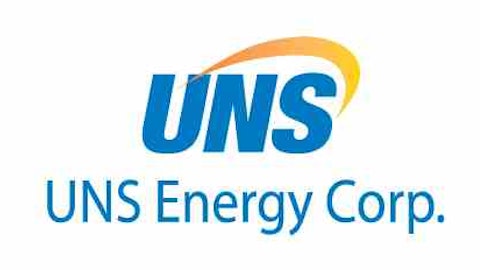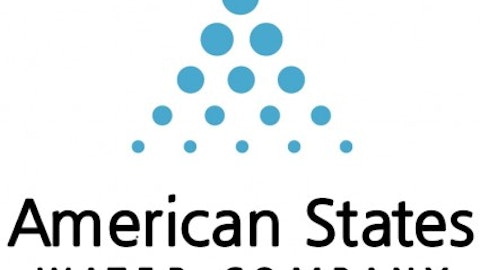Power companies are like most utilities in that they have two solid moats: they provide a service people expect, and they operate under legal monopolies. While there’s no law saying that utilities of any kind have to pay a dividend, they often do. With the moat plus the potential for income, this makes a power company a potentially powerful investment idea. Let’s see if the following candidates measure up.
If things were slightly different…
ITC Holdings Corp. (NYSE:ITC) owns a collection of 3,000 miles of transmission lines in Michigan. With a fairly low dividend yield of 1.7% and only $851 million in trailing-12 month sales, it doesn’t initially look like that great of a company. This is strange, considering that ITC trades for around 3 times its book value and about 24 times its earnings. However, there are positives here.
ITC Holdings Corp. (NYSE:ITC) pulls a 22.6% profit margin, which is an invaluable way to drive both expansion and future dividends. As a small company valued at around a $4.6 billion market cap, ITC is also at a size range where it has plenty of room to grow and expand.

Truthfully, if the price were to dip significantly or the dividend were to rise to a more attractive level, I would suggest seriously considering ITC Holdings Corp. (NYSE:ITC). For the moment, it’s a decent watch-list company that might simply be a bit pricey for right now.
Making the best of bad times
PG&E Corporation (NYSE:PCG) has some good things going for it. Being part of California, the world’s fifth-largest economy in its own right, should be a significant boon to PG&E. Being the major distributor of both power and gas in the northern part of the state almost to the Oregon border is a benefit as well.
Also, the fact that PG&E Corporation (NYSE:PCG)’s capital and diverse generation locations let it survive the 1906 San Francisco earthquake and fire say good things about how the company handles problems. This isn’t even mentioning how PG&E got through its bankruptcy in only three years.
There are advantages to how the California Public Utilities Commission (CPUC) allows PG&E Corporation (NYSE:PCG) to earn profits. The company has a rate of return on its shares of 10.4%, which gives it an edge over other companies in terms of the amount of capital it can invest into other projects. As well, the prices PG&E charges per kilowatt hour have gone a long way toward pressuring top-tier consumers to use solar panels to offset the increased costs.
Furthermore, PG&E Corporation (NYSE:PCG) is even working to develop an economic “subsidy” that allows California counties with high unemployment to purchase power less expensively than more prosperous counties.
The main disadvantages of PG&E are that its profits are legally limited and it can’t do anything without the CPUC’s approval. The company actually owns two plants, including one of the few nuke plants in the country, that it isn’t allowed to use for selling power to the public. PG&E Corporation (NYSE:PCG) also doesn’t have any particular advantages to being more internally efficient.
Granted, the company has its issues. But trading at around 1.5 times its book value and paying a 3.8% dividend as well as working to innovate how Californians receive their power, PG&E is a company I’d recommend taking a closer look at.
Rolling in the good times
UniSource Energy is essentially doing in Arizona what PG&E Corporation (NYSE:PCG) is doing in California. Working to take advantage of the climate in Arizona — from both a literal and business perspective — UniSource is making tremendous strides in the solar-generation industry. It pays a fair 3.4% dividend, and is only trading for 1.9 times its book value. So there is the potential of a good deal here.



